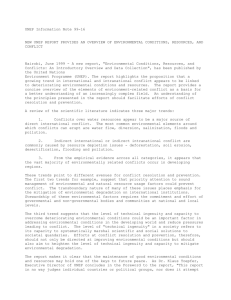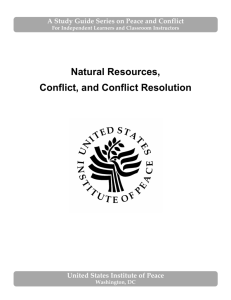Module 1 - Presentation 3: Resource Based Conflicts (Huggins)
advertisement
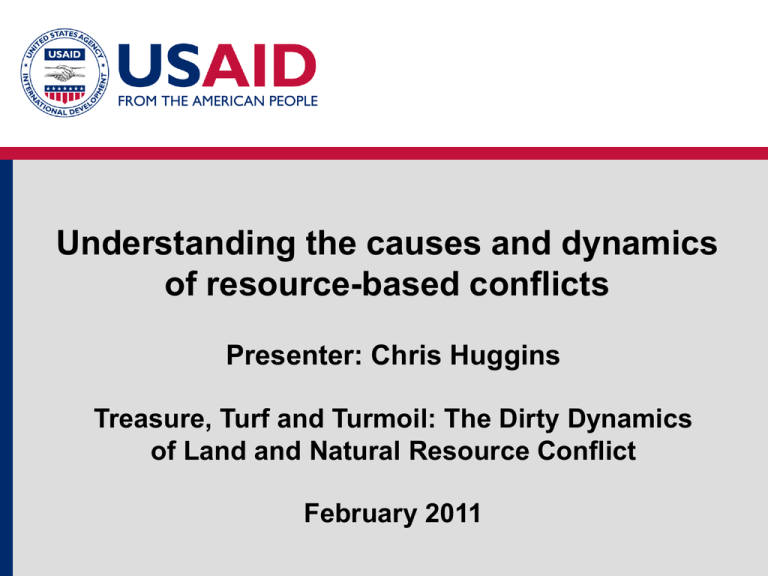
Understanding the causes and dynamics of resource-based conflicts Presenter: Chris Huggins Treasure, Turf and Turmoil: The Dirty Dynamics of Land and Natural Resource Conflict February 2011 Key issues: •“There is competition over resources... the competition, however, is not just to win but to define the rules, the players, and the extent of the playing field” • No ‘technical fix’ will succeed unless these fundamental conflicts are managed/transformed Analyzing conflict • Conflict has multiple causes • Conflicts evolve over time, through different phases • Many countries are in situation of ‘no war, no peace’ • Conflict affects the legitimacy of institutions, including the state. • This affects how USAID may work in such contexts Example: “Nested” conflicts D D Protected areas Conflict Intra Intracommunity tensions Inter-ethnic tensions Historical land claims Customary vs statutory tensions Failing land registry Over-Centralised governance systems International legal frameworks Political patronage networks Land and natural resources in developing countries • ‘Local’ conflicts often have global, & regional aspects • Often multiple & overlapping uses by different kinds of users of different status • Mismatch between customary & state land and natural resource tenure systems • Only 5-10% of land is registered • Women’s rights to land and resources precarious Land and natural resources in developing countries • Ownership of collectivelymanaged resources is often disputed by the state and communities • Massive privatization of the commons is underway • 75% of major conflicts since 1980s were in agrarian states with high influence of custom • Collective or customary rights can be secured if key actors want to Resources and conflict: “Scarcity” • Environmental scarcity leads to political and social pressures that fuel conflict • ‘Elite capture’ of resources is common • Scarcity is therefore best understood in relative, not absolute terms • Exacerbated by climate change • Who benefits from narrative of ‘crisis’? • ‘Scarcity’ model is but has been criticized as over-simplistic Resources and conflict: “Abundance” • Competition over abundant resources can cause conflict • War entrepreneurs monopolize markets through violence • Risk depends on lootability • Economic focus of ‘greed’ research excludes socioanthropological data, historical narratives Resources and conflict: Inequalities • Vertical inequalities within states provide motives but boundaries between groups facilitate mobilization of violence • Access to land and natural resources is often based on historical claims through kinship: competition over resources etc, conflict often becomes seen as ‘ethnic’ • If political/administrative system excludes some groups, and dispute resolution mechanisms are seen as biased or ineffective, violence is more likely Multiple linkages with conflict • Generalized inequality of access causes poverty and discontentment, motives of conflict • Specific disputes act as opportunities for conflict • Revenues from land and resources provide means to sustain conflict • Secondary conflicts over land and property rights (post-conflict situations) Photo credit: Neils photography. Accessed through Flickr . Creative Commons License Land and natural resource issues as motives • Inequality in land/natural resource access is often part of a wider governance problem • Poverty encourages some to join armed groups • Population displacement creates a pool of disenfranchised, impoverished youth • Where underlying causes are not tackled, conflict will persist Land and natural resources as opportunities for violence • Specific land/resource disputes can become a focus for discontent, polarizing groups • Risk of politicization, especially by conflict entrepreneurs • Disputes and demonstrations accelerate the development of tensions or trigger violence • Example: Rumonge land case in Burundi, 1993 Land and natural resources as the means to sustain violence • Armed actors capture local economic systems • Profits from access to resources can sustain warring parties – war economy develops • Improved access to land and resources for one group (e.g. ethnic cleansing) may act as a disincentive to negotiations Post-conflict disputes Conflict changes social relationships Common issues in secondary (post-conflict) disputes: • Overlapping rights and claims to land and NR (IDPs, refugees) • Lack of relevant land/ NRM policies • A dysfunctional land administration system • Land grabbing/encroachment on private/protected areas • Ambiguous, controversial or unenforceable laws. ‘Conflict sensitive’ programming vs. programming for conflict management Conflict sensitive programming: • Ensures that programs do not exacerbate violence. • A ‘do no harm’ approach • ‘Minimum standard’ for programs working in areas affected by conflict Programming for Conflict Management • Key goal is to influence the dynamics of conflict and peace Learning points from this presentation • ‘Local’ conflicts are complex and often have national and international dimensions • Both scarcity and abundance of resources can lead to conflict • Land and natural resources can be motives, means, and opportunities for conflict • Overlapping claims over land and natural resources are a common feature in post-conflict countries
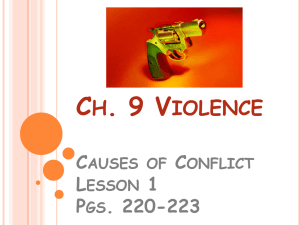


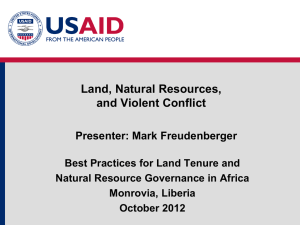
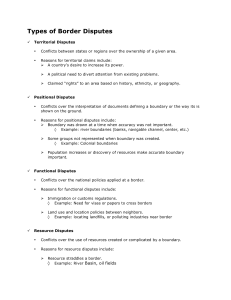

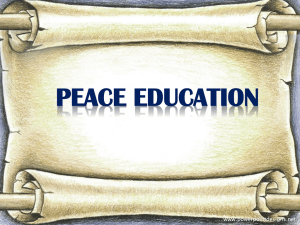
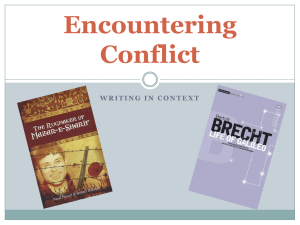
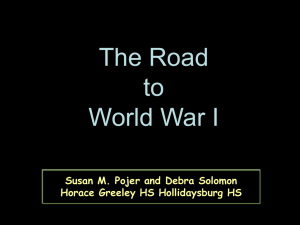
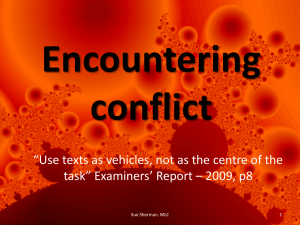
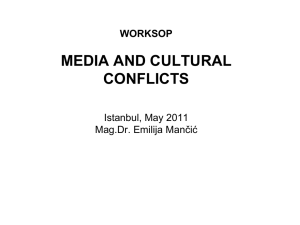

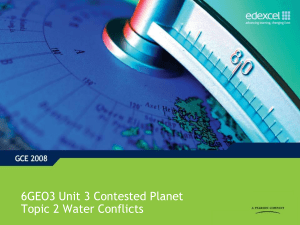
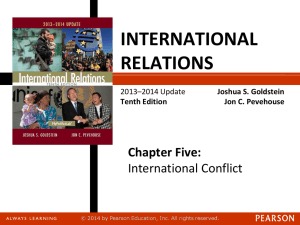
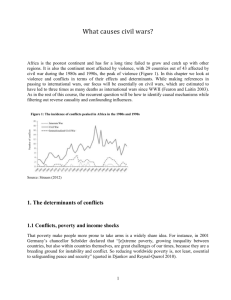
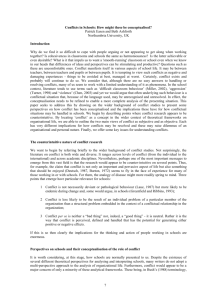
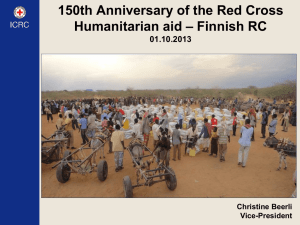
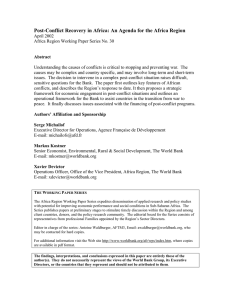
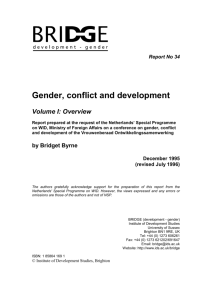
![The Environment and Non-State Conflicts[1].](http://s3.studylib.net/store/data/007645936_2-b2cc9ad45cffd4e7363997998c7180e9-300x300.png)
